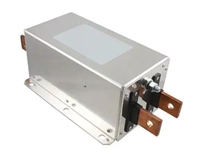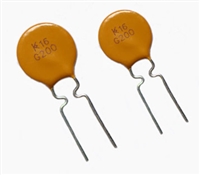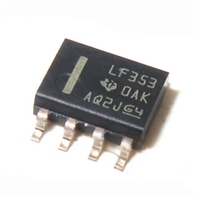MISSING CODES are those output codes that will never
appear at the ADC outputs. The ADC104S021 is guaranteed
not to have any missing codes.
Specification Definitions
ACQUISITION TIME is the time required to acquire the input
voltage. That is, it is time required for the hold capacitor to
charge up to the input voltage.
OFFSET ERROR is the deviation of the first code transition
(000...000) to (000...001) from the ideal (i.e. GND + 0.5
LSB).
APERTURE DELAY is the time between the fourth falling
SCLK edge of a conversion and the time when the input
signal is acquired or held for conversion.
SIGNAL TO NOISE RATIO (SNR) is the ratio, expressed in
dB, of the rms value of the input signal to the rms value of the
sum of all other spectral components below one-half the
sampling frequency, not including harmonics or d.c.
CONVERSION TIME is the time required, after the input
voltage is acquired, for the ADC to convert the input voltage
to a digital word.
SIGNAL TO NOISE PLUS DISTORTION (S/N+D or SINAD)
Is the ratio, expressed in dB, of the rms value of the input
signal to the rms value of all of the other spectral compo-
nents below half the clock frequency, including harmonics
but excluding d.c.
CROSSTALK is the coupling of energy from one channel
into the other channel, or the amount of signal energy from
one analog input that appears at the measured analog input.
DIFFERENTIAL NON-LINEARITY (DNL) is the measure of
the maximum deviation from the ideal step size of 1 LSB.
SPURIOUS FREE DYNAMIC RANGE (SFDR) is the differ-
ence, expressed in dB, between the rms values of the input
signal and the peak spurious signal where a spurious signal
is any signal present in the output spectrum that is not
present at the input, excluding d.c.
DUTY CYCLE is the ratio of the time that a repetitive digital
waveform is high to the total time of one period. The speci-
fication here refers to the SCLK.
EFFECTIVE NUMBER OF BITS (ENOB, or EFFECTIVE
BITS) is another method of specifying Signal-to-Noise and
TOTAL HARMONIC DISTORTION (THD) is the ratio, ex-
pressed in dB or dBc, of the rms total of the first five
harmonic components at the output to the rms level of the
input signal frequency as seen at the output. THD is calcu-
lated as
Distortion
or
SINAD.
ENOB
is
defined
as
(SINAD − 1.76) / 6.02 and says that the converter is equiva-
lent to a perfect ADC of this (ENOB) number of bits.
FULL POWER BANDWIDTH is a measure of the frequency
at which the reconstructed output fundamental drops 3 dB
below its low frequency value for a full scale input.
GAIN ERROR is the deviation of the last code transition
(111...110) to (111...111) from the ideal (VREF − 1.5 LSB),
after adjusting for offset error.
where Af1 is the RMS power of the input frequency at the
output and Af2 through Af6 are the RMS power in the first 5
harmonic frequencies.
INTEGRAL NON-LINEARITY (INL) is a measure of the
deviation of each individual code from a line drawn from
negative full scale (1⁄
2
LSB below the first code transition)
through positive full scale (1⁄
2
LSB above the last code
THROUGHPUT TIME is the minimum time required between
the start of two successive conversion. It is the acquisition
time plus the conversion time. In the case of the
ADC104S021, this is 16 SCLK periods.
transition). The deviation of any given code from this straight
line is measured from the center of that code value.
INTERMODULATION DISTORTION (IMD) is the creation of
additional spectral components as a result of two sinusoidal
frequencies being applied to the ADC input at the same time.
It is defined as the ratio of the power in the second and third
order intermodulation products to the sum of the power in
both of the original frequencies. IMD is usually expressed in
dB.
7
www.national.com






 电子元器件中的网络滤波器、EMI滤波器与EMC滤波器:分类关系与功能详解
电子元器件中的网络滤波器、EMI滤波器与EMC滤波器:分类关系与功能详解

 NTC热敏电阻与PTC热敏电阻的应用原理及应用范围
NTC热敏电阻与PTC热敏电阻的应用原理及应用范围

 GTO与普通晶闸管相比为什么可以自关断?为什么普通晶闸管不能呢?从GTO原理、应用范围带你了解原因及推荐型号
GTO与普通晶闸管相比为什么可以自关断?为什么普通晶闸管不能呢?从GTO原理、应用范围带你了解原因及推荐型号

 LF353数据手册解读:特性、应用、封装、引脚说明、电气参数及替换型号推荐
LF353数据手册解读:特性、应用、封装、引脚说明、电气参数及替换型号推荐
